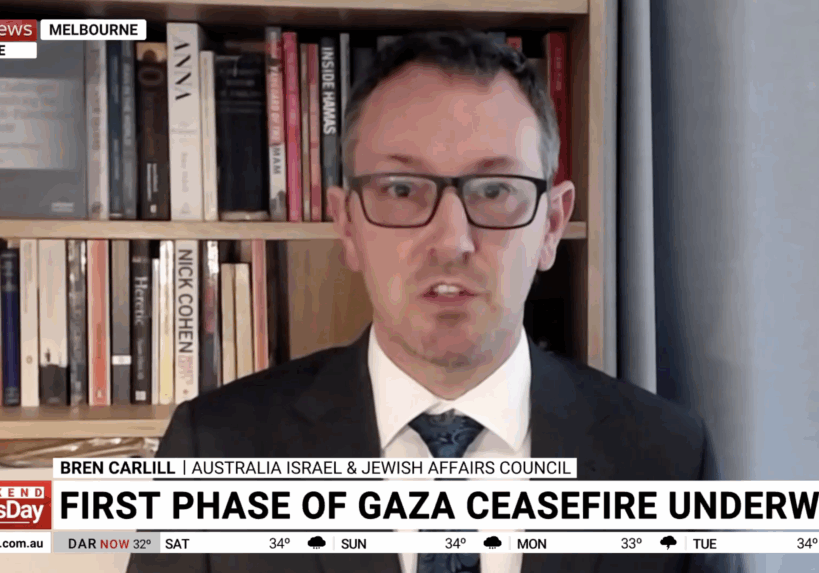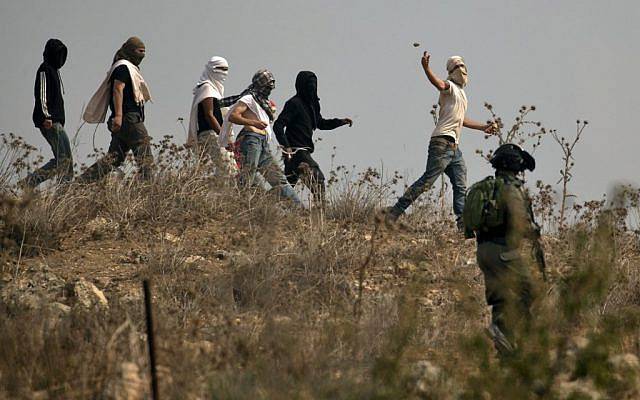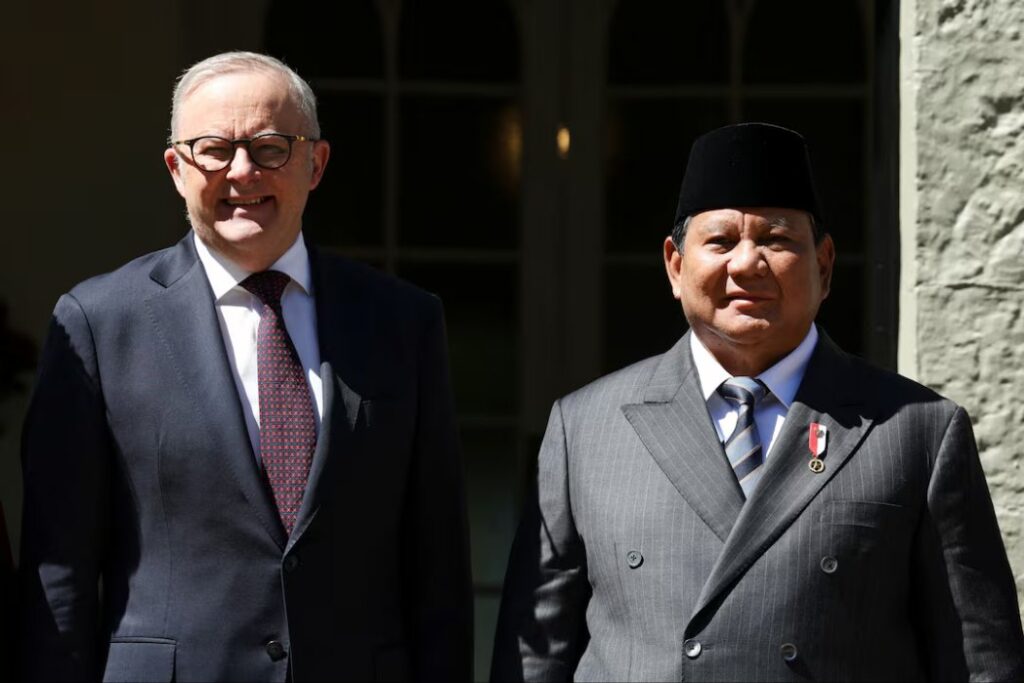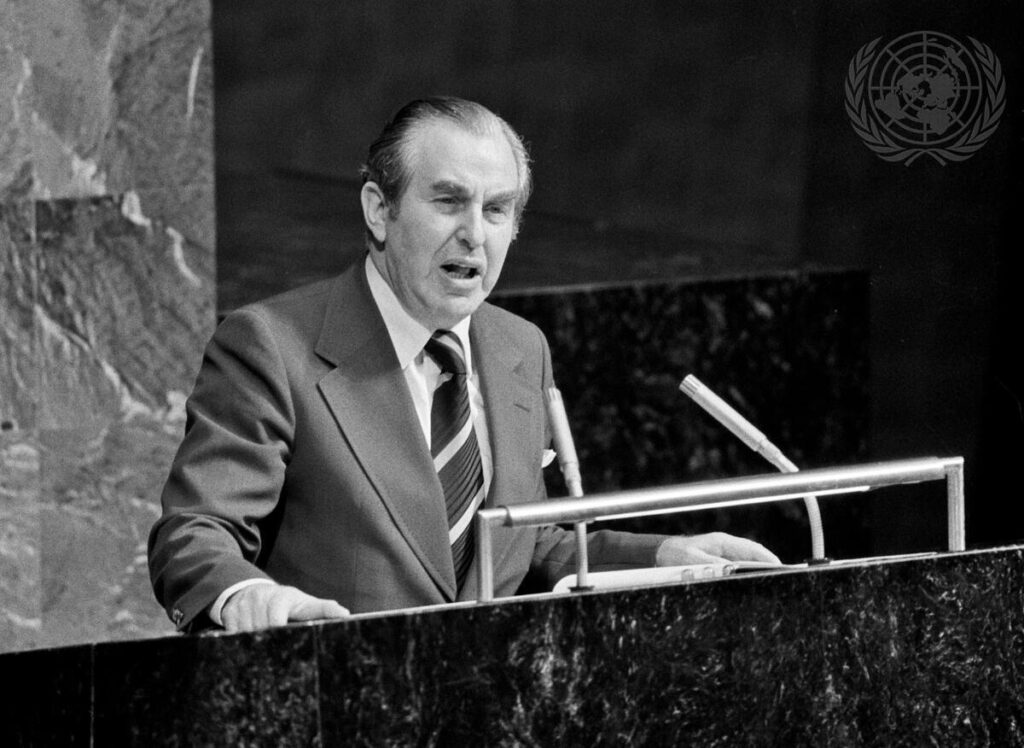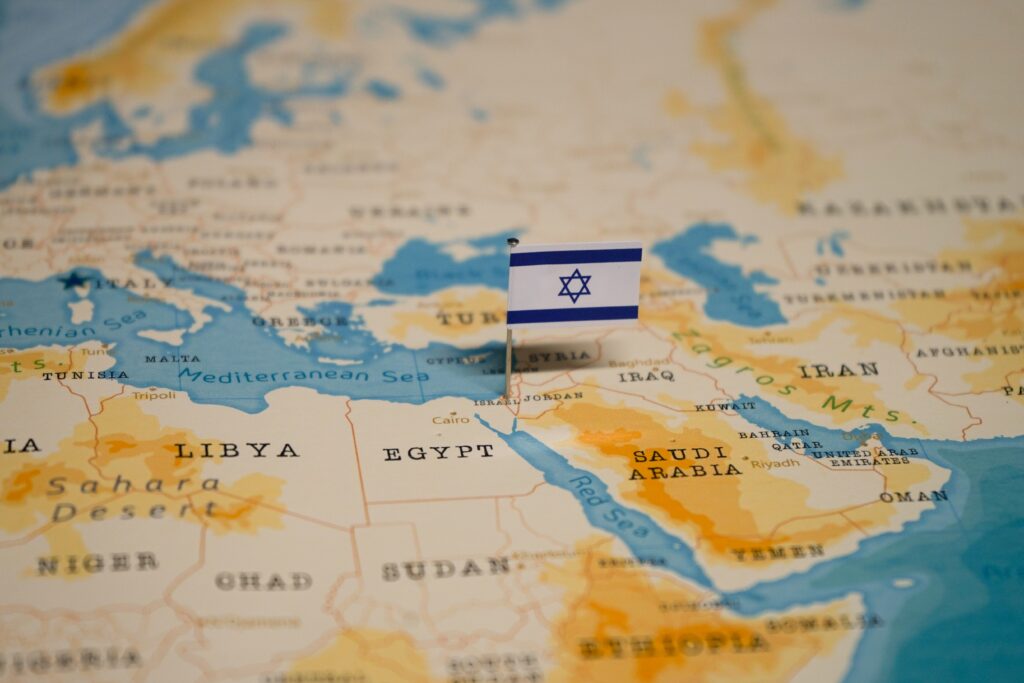FRESH AIR
Afghanistan: The Forgotten Front Against Iran
November 16, 2018 | Oved Lobel
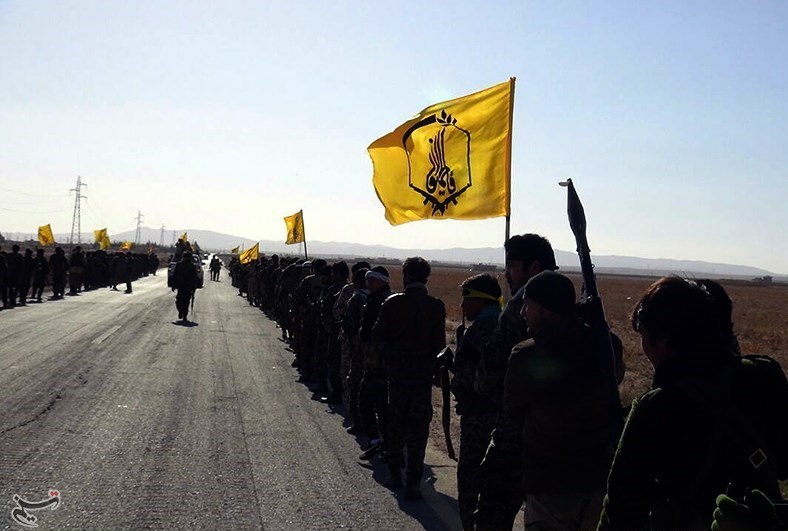
While rarely discussed in the context of containing or rolling back Iranian regional influence and terrorism sponsorship, the war in Afghanistan is in fact an essential element of any coherent strategy to do so.
As in Syria, Iraq, Lebanon, Yemen, the Palestinian Territories, and elsewhere in the Middle East, Iran is a key factor behind the ongoing instability in Afghanistan. Tehran’s substantial support for a broad and motley collection of often competing and ideologically diverse parties in Afghanistan ensures a failed State and increased susceptibility on the part of these groups to its influence or control. This in turn provides Iran with both asymmetric military options against more conventionally powerful States, as well as a vacuum in which to further entrench and export Iran’s Islamist ideology.
Pakistan’s intelligence services may still be the foremost player in Afghanistan. Yet with the recent news that senior US diplomats have been meeting directly with Taliban representatives to discuss “reconciliation” with the official Afghan government, it is vital that the US and its allies do not provide Iran the opportunity to spread its revolution further across Afghanistan.
According to journalist Steve Coll, Ayatollah Khomeini’s revolutionary return to Iran in 1979 inspired the first major uprising in Afghanistan against the Soviet-backed communist regime, led by then Captain Ismail Khan and his subordinates in Herat province.Today, Herat remains a bastion of growing Iranian power and influence under the the same Ismail Khan, who was previously governor of the province and a minister in Kabul and still holds powerful unofficial sway.
Throughout the long decades of Afghan civil war, the Iranian regime sustained its own distinct factions, the “group of eight,” including the Afghan branch of Hezbollah, which according to the Russians were completely subordinated to Tehran. However, the Iranians also seem to have supported nearly every other faction and leader fighting in Afghanistan at one stage or another during the Soviet invasion, the subsequent civil war, and, finally, the American invasion to topple the Taliban following the September 11 attacks.
The Taliban Connection
Iran’s relationship with the Taliban – a creature of Pakistan’s Inter-Services Intelligence, or ISI – has undergone an almost unimaginable transformation since the bloody civil war that followed the collapse of the communist regime.
By the mid-1990s, at the height of the civil war, Iran’s Shiite militias had been mostly eradicated by various other Afghan factions, including the forces of Ahmed Shah Massoud. Iran then threw its support strongly behind Massoud, who according to some sources had fought alongside the PLO in Lebanon in the 70s, to attempt to push back against the seemingly unstoppable Taliban. Yet in August 1998, the Taliban – led by and fighting alongside ISI officers, according to Coll – overran the city of Mazar-i-Sharif, slaughtering hundreds and possibly thousands of Shi’ites and more importantly killing multiple Iranian diplomats and capturing dozens more. Iran deployed 200,000 troops to the border, ready to invade.
Three years later, al-Qaeda pulled off the worst terrorist attack in history under the auspices of the Taliban, and Iran saw its chance to rescue both the Taliban and al-Qaeda and bring them under its sway.
As detailed by the Foundation For Defense of Democracies’ Thomas Joscelyn, a Taliban delegation to Iran led by Khairullah Khairkhwa inked an alliance with Iran’s Islamic Revolutionary Guard Corps (IRGC) in 2001, mere months before the invasion. Iran would provide intelligence on coalition movements, open its borders to al-Qaeda in both directions, and arm the Taliban, including with Man-Portable Air-Defense Systems (MANPADS). The IRGC’s expeditionary wing, the Quds Force (IRGC-QF), utilised a special division to support operations throughout Afghanistan called the Ansar Corps, based out of the Iranian city of Mashhad.
The Taliban opened an office in Mashhad around 2014. This has since become a diplomatic centre of gravity for the group, to the point that some refer to the representatives as the ‘Mashhad Shura,’ a play on the Quetta Shura leadership of the Taliban. Iran also maintains multiple points of contact with individual Taliban leaders and commanders in Iran, Pakistan, and Qatar as well as in Afghanistan itself.
While Iran has been training, funding, and arming the Taliban for nearly two decades – including with the Explosively-Formed Penetrators (EFPs), infamous for their deadly effect against US and allied troops in Iraq – the scope has apparently significantly expanded. According to Afghan and Taliban officials, Iran runs multiple permanent training camps on Iranian territory for elite Taliban fighters, training hundreds at a time and arming them with new weapons. As recently as October 23, the US sanctioned more IRGC-QF agents for facilitating Taliban attacks on government forces in Herat.
The decades of war in Afghanistan have driven more than two million Afghan refugees into Iran, while millions more live and work illegally or legally within the country. As reported by the New York Times, citing Western and Afghan officials, Iran has recruited scores from the Sunni portion of this population and press-ganged many more into service for the Taliban – although it has also begun deporting the poorly-treated Afghans en masse alongside its recruitment campaigns. In addition, the recent economic collapse in Iran has precipitated a mass exodus of Afghans back to Afghanistan.
The IRGC is also intimately involved in one of the Taliban’s primary sources of funding, narcotics trafficking, and oversees a program that grants material assistance to the Taliban in exchange for opium and heroin precursors, according to the US Treasury Department.
Moreover, diplomatic cables leaked by Wikileaks show that United Arab Emirates’ intelligence services accuse the IRGC and Iranian navy of transporting Taliban and al-Qaeda fighters.
The Russo-Iranian alliance in Afghanistan
Highlighting how close the Iranian relationship is to the Taliban, the US killed Taliban leader Mullah Akhtar Mansour in an airstrike in Pakistan on his way back from a trip to Iran in mid-2016. Mansour had been close to the Iranians since the 1990s, according to multiple analysts and Afghan officials, bound together by the importance of Iran as a drug trafficking route. On this particular trip, Mansour was looking to bandwagon on the strategic alliance between Russia and Iran formed in 2015. Iran was facilitating meetings between high-level Russian officials and the Taliban on their soil, in cooperation with ISI, to obtain weapons and funding from Moscow, when Mansour was killed. The US now accuses Russia of conducting counterterrorism drills along the Afghan border with Tajikistan and then deliberately leaving equipment behind for the Taliban.
Afghanistan has thus become another aspect of the Russo-Iranian alliance established primarily to defend the Assad regime in Syria. Serious Russian support for the Taliban via Iran only began around this time, says General John Nicholson, the former commander of US forces in the country. It is an irony of history that only a few years after the Soviet Union withdrew from Afghanistan, Russia and Iran formed a tacit but powerful alliance to back Massoud and other anti-Taliban actors, providing tens of millions of dollars and hundreds of tanks, helicopters, small arms, fighter jets, and intelligence and military personnel. Today, this alliance has been revived but to serve the opposite purpose – to back the Taliban rather than oppose it.
Moscow has been hosting a series of conferences on Afghanistan, ostensibly to promote reconciliation but actually to undermine US initiatives, even as Iran, Russia, Pakistan, and China convene intelligence meetings at the highest level that tacitly formalise support for the Taliban against Islamic State. China itself, according to a report in Izvestiya, had previously come to an arrangement with the then-leader of the Taliban, Mullah Omar, to restrict Uighur militants from traversing the border – an arrangement it no doubt hopes to renew as part of its crackdown on its Muslim minority – and it also is running parallel track negotiations for its own purposes. Recently, the Taliban took part in a summit in Moscow, and has expressed willingness to participate in further negotiations under Russian auspices. Notably, one of the recently released senior Taliban figures leading the negotiations with the US is none other than Khairullah Khairkhwa, the same official who negotiated the Taliban’s alliance with Iran 17 years ago.
Other Iranian avenues of influence in Afghanistan
Staunch support for the Taliban is hardly Iran’s only avenue of influence in Afghanistan. While it may seem paradoxical, Iran and Russia have both strongly supported certain government figures and the US-backed government as a whole in order to maintain and expand their influence. In Herat, for example, which is sometimes called “Little Iran” for its linguistic and religious similarities and substantial Iranian influence, the IRGC reportedly has thousands of agents, local criminals, and officials on its payroll. Further, the Ansar Corps is allegedly carrying out multiple assassinations and kidnappings and purchasing local officials to maintain influence there. Afghan police claim that, in three years of counterterrorism sweeps of Herat, they’ve arrested 2,000 people who live in Iran and infiltrated to carry out attacks. According to several sources, Iran has spent millions of dollars to build and promote Shi’ite fundamentalist Madrasas and charities in Herat.
And then, of course, there’s the longstanding Iranian patronage arrangement with Afghan warlord Ismail Khan.
Iran has also invested heavily in Afghan media, where nearly a third of all media content is funded by Iran or repeats Tehran’s propaganda, according to some reports, and it has helped support various infrastructure projects throughout Afghanistan, as well, with hundreds of millions of dollars. Iran also recently surpassed Pakistan as Afghanistan’s largest trading partner.
“Almost every important Afghan commander has family living in Iran and most of them were educated in fundamentalist religious schools,” and nearly every major warlord or government official owes Tehran, according to a former senior Afghan government source.
Most notably, the former president of Afghanistan, Hamid Karzai, was apparently on Iran’s payroll, taking in millions of dollars for at least a decade. Gulbuddin Hekmatyar, the most infamous Afghan warlord of all, was reportedly sheltered and run as a proxy by Qassem Soleimani, the chief of the IRGC-QF. Abdul Rashid Dostum, a former communist general turned major warlord who serves as Afghanistan’s very controversial Vice President, was also allegedly a proxy of the IRGC in conjunction with Russia. Abdul Malik Pahlawan, a warlord who brutally murdered hundreds of captured Taliban fighters after allying with them and facilitating their conquest of Mazar-i-Sharif, is also sympathetic to the Iranians, having purportedly resided in Mashhad for several years with his family before returning to power in Afghanistan. This is by no means a comprehensive list.
Yet another arm of the IRGC in Afghanistan is al-Qaeda, which has run its “core pipeline” out of Iran since 2001, although the alliance reportedly began in the early 1990s. Not only does al-Qaeda in Iran oversee global operations, including Syria, according to a recent UN report, but it is also vital for arming and training the Taliban in Afghanistan and fighting alongside them against government forces.
Iran and the Afghan Shi’ites
Although the excuse given by Iran for its support for the Taliban is that it just wants to fight the Islamic State in Afghanistan, something even the US supports, the reality is that it wants to bleed the United States and its allies and keep the country broken. This is designed to create more space for its most important and hitherto unutilized asset: the Afghan Shi’ite brigades.
As Phillip Smyth, an expert on IRGC Shi’ite jihadi movements, has noted, “Tehran could decide to reorient its new network of Afghan proxies eastward, with the goal of asserting broader influence among Afghanistan’s often fractious Shiite communities.” Recruited from Afghanistan’s Hazara Shi’ite minority who fled persecution to Iran, as well as from smaller populations in Syria and possibly Afghanistan itself, these “Fatemiyoun” brigades, along with “Hezbollah Afghanistan,” are an integral part of the IRGC regional proxy network. They have taken part in battles in Syria, but also reportedly fight in Yemen alongside the Houthis.
Unlike its other allies and clients in Afghanistan, the Shi’ite jihadists share Iran’s ideology and transnational goals. As Ismail Qaani, the deputy commander of the IRGC-QF, said at a memorial for Afghan martyrs killed in Syria, “Fatemiyoun is a new culture – a collection of brave men who do not see boundaries and borders in defending Islamic values.” Some cadres of Fatemiyoun were previously part of the IRGC Shi’ite militias fighting during the civil war that were ultimately destroyed, and there is little doubt Iran wishes to rebuild these networks and militias again – even as Tehran supports virtually all the factions in Afghanistan against each other.
Iran thus maintains expanding economic, military, and political clout throughout Afghanistan. Far from pursuing stability and a friendly central government, Tehran is playing each facet of influence off the other to disrupt and destabilise the country.
Recent reports of Hazara self-defense forces being stood up in Kabul could be an ominous portent of things to come. Battles between the Taliban and Hazara militias – the commander of which, Abdul Hakim Shujaee, is himself wanted for serious crimes by the government in Kabul – may open yet another avenue for the Fatemiyoun as Hazaras seek to respond to sectarian attacks. With the Taliban specifically attempting to conquer Hazara-dominated regions and the government’s failure to protect Hazara protesters even in the centre of Kabul from the Islamic State and Taliban, Iran has ample opportunity to paint itself as the protector of the Hazara minority throughout the country
The trendlines in Afghanistan are incredibly negative along all metrics. Yet regardless of how the Western coalition chooses to proceed in attempting to deal with the snowballing Afghanistan problem, a key consideration must be to block Iranian attempts to turn Afghanistan into the next incubator for the expansion of the Islamic revolution.
Tags: Afghanistan/ Pakistan, Hezbollah, IRGC, Iran, Qassem Soleimani, Russia, Terrorism
RELATED ARTICLES

“Bittersweet” aftermath of hostage release deal: Joel Burnie on Sky News
















